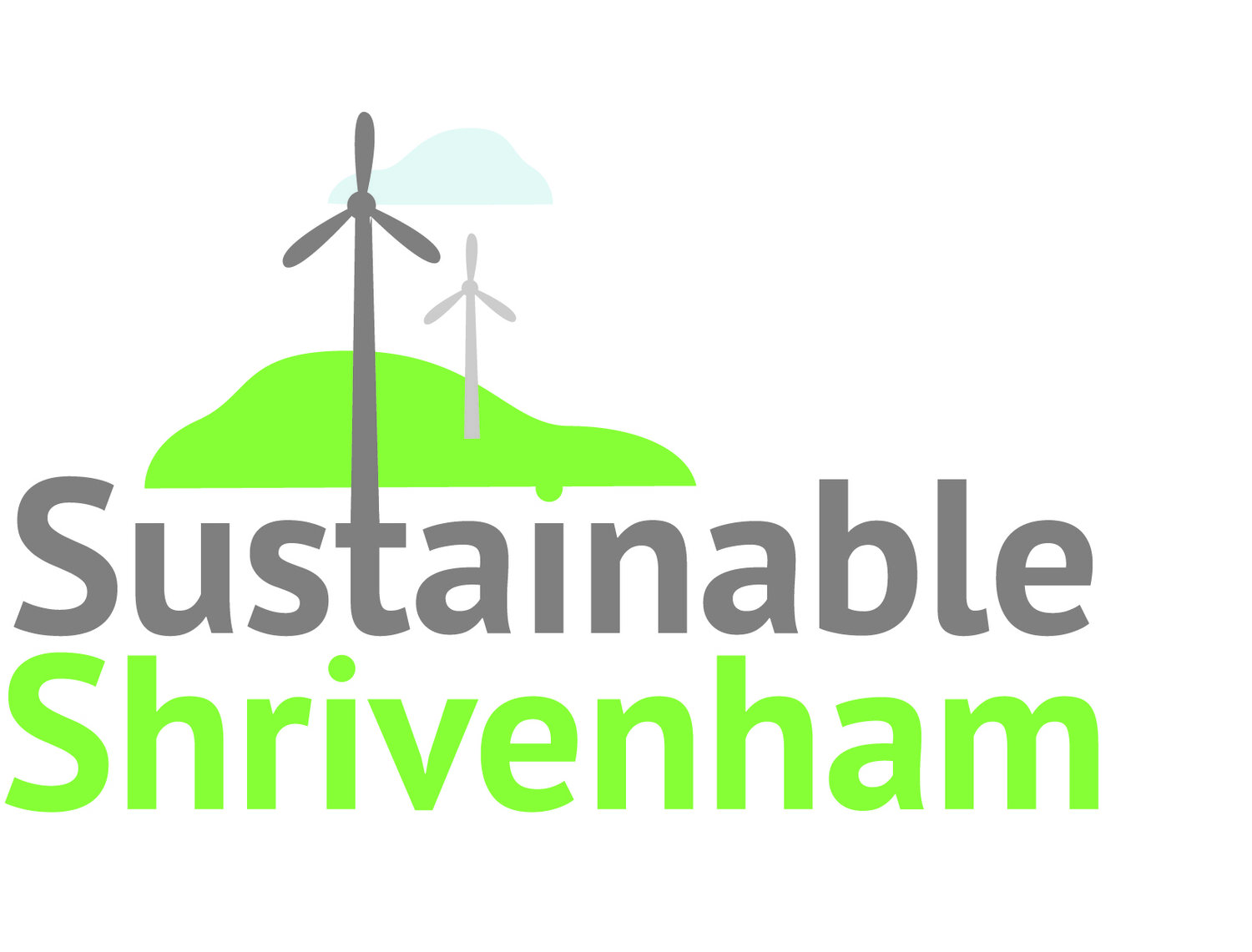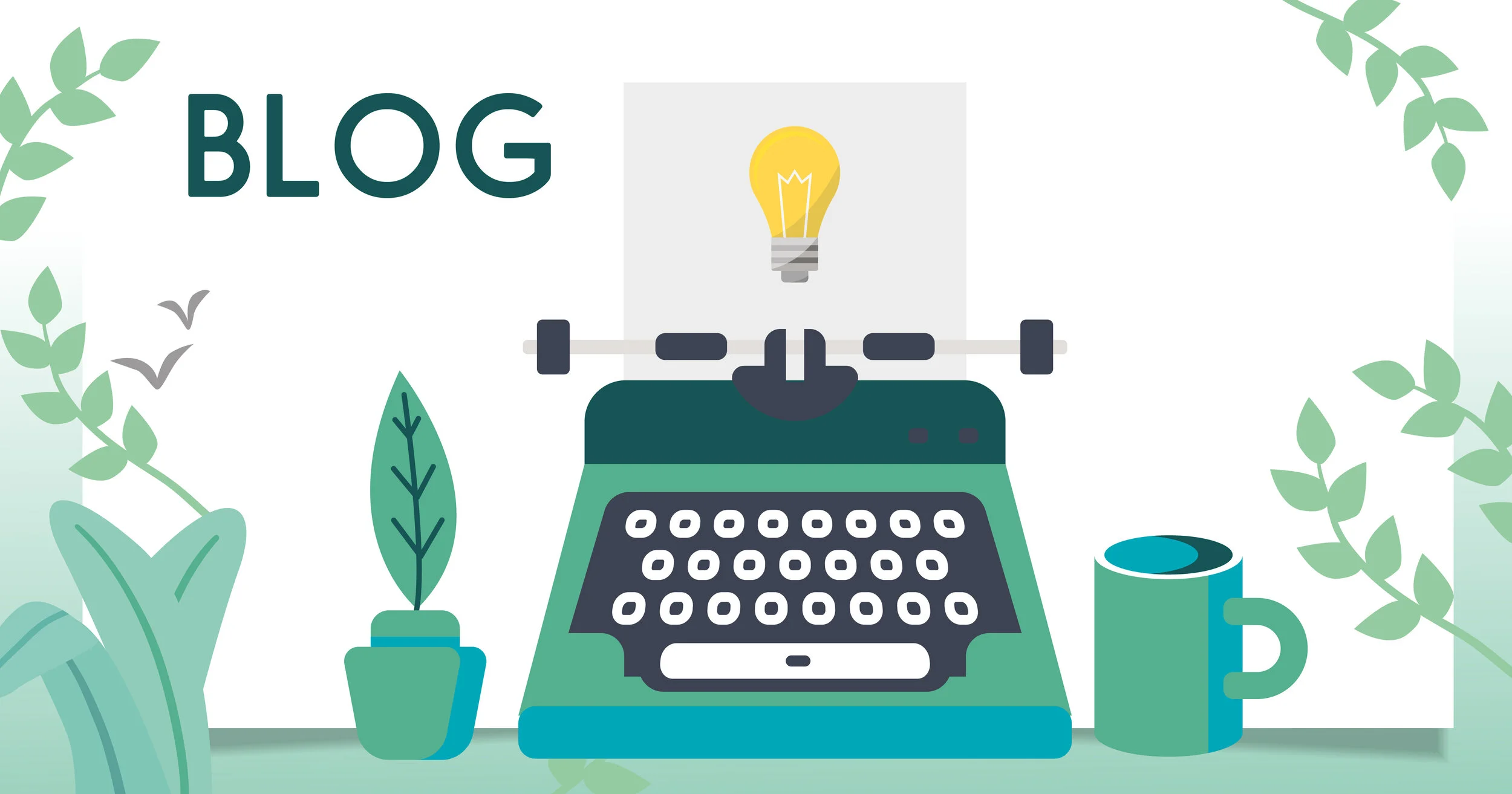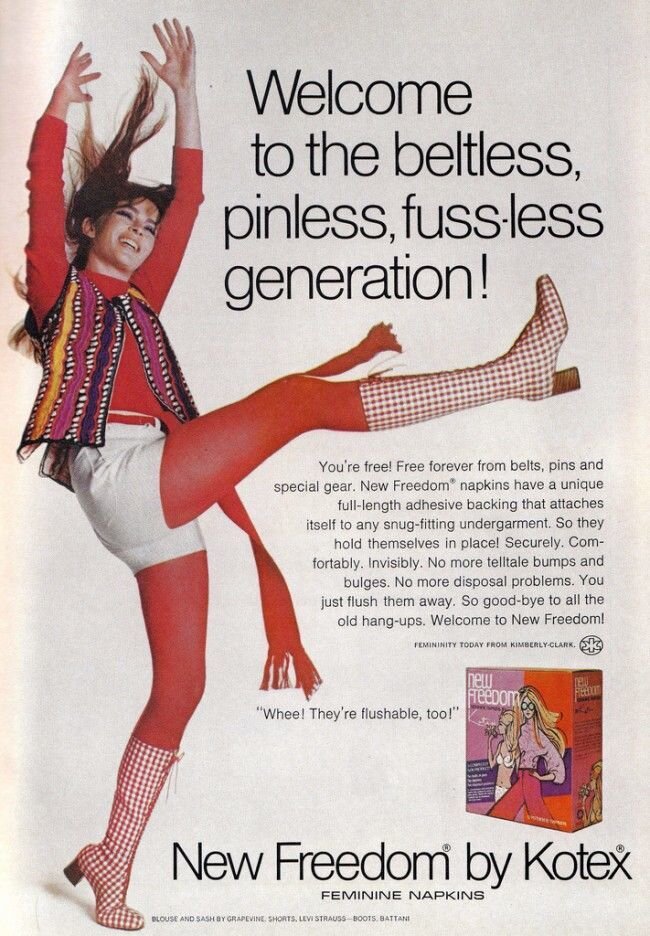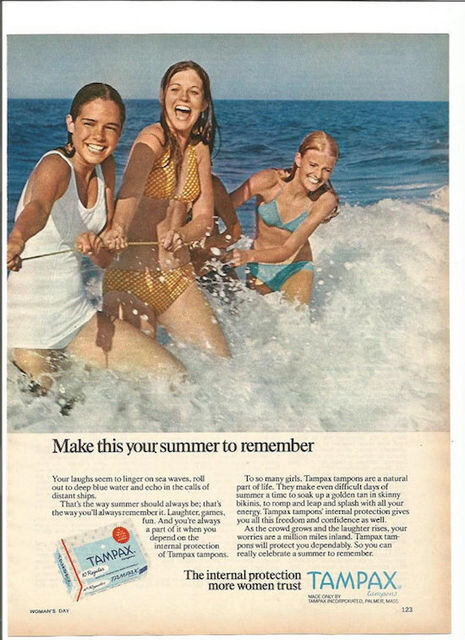I have volunteered this month to write about sustainable sanitary products, both for menstruation and incontinence. However, having just turned 60 I have not had a period for many moons so, for the sake of research I bought re-usable incontinence liners for those “oops” moments when I trip over the dog or cough unexpectedly. My feedback on these is later in the article.
I apologise now if anyone finds the content of this article offensive – I’ve tried to be practical but also humorous and at the end of the day we are all women (except if you are a man reading this – to which I say bravo!!)
It was quite easy to get side-tracked whilst doing my research as my search key words bought up many amusing and mindboggling articles – factual, historical, psychological and so on. But I have tried not to digress too much, and to keep this article focussed on sustainability.
Apparently, there are over 5000 common slang or code words for menstruation. “Time of the month”, “Monthlies”, “Eve’s Curse”, or just plain “The Curse”, “Aunt Flo”, “My Visitor”, “On the Blob”, “On the Rag”, “Code Red”, “Crimson Tide” and even “Crimson Wedding” – a nod to Game of Thrones fans!
I followed up on the “rag” reference as that implies the use of cloths during menstruation.
Some history
There are numerous articles and books which explore where the phrase “on the rag” probably originates from and show that female predecessors were actually very sustainable in their management of their monthly visitor.
The Lady in Red: Medieval Menstruation (From, The Medieval Vagina: An Historical and Hysterical Look at All Things Vaginal During the Middle Ages, by Karen Harris and Lori Caskey-Sigety.)
‘Throughout history, girls and women endured the dreaded monthly visitor, and the medieval era was certainly no exception. As we reflect back on what we know about hygiene in the Middle Ages, we naturally feel empathy for the medieval maidens who had to suffer through their monthly cycles without the modern conveniences of pads, panty liners, and tampons. Menstruating in the Middle Ages was a vastly different experience than it is today. Lest we feel too sympathetic towards our sisters in antiquity, we should examine these differences and the innovative ways that these women dealt with Eve’s curse.
To start, medieval women had fewer periods than today’s women. The reason for this is threefold. First, although the average age of puberty then is not much different than today, (between 12 and 14 years of age), women reached menopause earlier, often in their late thirties. Second, fewer medieval women had regular monthly periods. Poor nutrition and hard work meant that many women had low body fat. A woman needs to have some amount of body fat or her reproductive system slows down and menstruation ceases. Today, this is only problematic for girls suffering from eating disorders or competitive athletes like distance runners or gymnasts. Lastly, mothers in the Middle Ages typically had more children and breastfed their children longer. Breastfeeding stymied menstruation. All this means that, over the course of her lifetime, medieval women had vastly fewer periods to contend with than today’s females.
Yet, they did have periods and they needed some way to handle the menses mess without the feminine hygiene products we have today. Medieval women had two choices, much like we do today: she could find a way to catch the flow after it left her body or find a way to absorb it internally. In our modern words, medieval women could use a makeshift pad or a makeshift tampon. Pads were made of scrap fabric or rags (hence, the phrase “on the rag”). Cotton was preferred because the material absorbs fluids better than the alternative, wool. Wool not only repels liquids, but it is itchy and uncomfortable. (And menstruation is uncomfortable enough!) Medieval ladies then had to devise ways to keep the pad in place as panties and underwear were not yet popular. There is some archaeological evidence to show us that some women may have worn panty-like garments to hold the menstrual pad. Women could also wind cotton fabric around a twig and use it as a proto-tampon.
Here is an interesting side note: A common type of bog moss found throughout medieval England, sphagnum cymbifolium, is remarkably absorbent. It was used as stuffing for menstrual pads, as toilet paper, and as a battlefield dressing for wartime wounds. The popular name for this moss is blood moss; etymologists contend that this moniker comes from its use in battlefield first-aid. This account, of course, oozes of heroism and masculinity. But is more likely the case that blood moss earned its name by helping medieval women with their uniquely feminine problem.
Whether they chose a homemade pad or a homemade tampon, medieval women worried about leaks and stains. This is a main reason why red was a popular colour for medieval petticoats. The scarlet colour was not only fashionable and decorative, but also functional as to disguise the menses.
So, instead of having the luxury of visiting the drugstore to pick up supplies for the monthly visitor, medieval women turned to nature. Or she simply wore red.’
The Fascinating Origin Of 'On The Rag' Will Make You Seriously Grateful For Tampons found on Bustle.com explains how the different sanitary “towels” were used by Victorian ladies and how they were washed and dried. Apparently, they could not be hung out for all and sundry to see and had to be dried surreptitiously around the house. The used rags were often kept in a bag (rag bag) until laundered.
Interestingly, according to a BBC article the first recorded attempts to sell disposable pads date to the 1890s. Johnson & Johnson made and marketed "Lister's Towels" in the US in 1896 and "Hygienic Towelettes", from the German manufacturer Hartmann, were advertised in Harrods, in London, in 1895 - How did companies sell 'unmentionable' sanitary towels? - BBC News
The marketing of towels and pads is another huge area in which to get side-tracked, but until recently they all seem to concentrate on comfort, discreteness and the ability to continue roller blading and other sporting activities whilst wearing impeccable white clothing!
It appears that over the years our growing obsession with personal hygiene has meant that the range of sanitary products has increased to include, pads, liners, wrapped liners (more plastic), tampons of all sizes, cardboard applicators, plastic applicators, intimate wipes, perfumed disposal bags etc. All of which have to be disposed of - where do these all go??????
So now what?
The figures I have used from the internet estimate that 1.5bn to 2bn sanitary items are flushed down Britain's toilets each year. These flushed tampons, applicators or pads accumulate and add to the growing issue of blocked drains and sewers. Sanitary products aren’t always effectively filtered out by the waste treatment plants and can end up in rivers and coastal waters it is estimated that sewage-related debris makes up about 6% of Britain’s beach litter – and most of us agree that tampons don’t make great swimming companions.
Interestingly many other countries do not share our approach to flushing sanitary products and adopt the bag and bin approach. And although sanitary disposal bins are provided in female toilets, I bet most tampons are flushed rather than binned – I know I have always flushed tampons without thinking of the longer-term consequences. So perhaps manufacturers should do more to encourage responsible disposal on packaging?
So what are the alternatives – I’ve listed some below but we would love to hear from any of our members who can personally recommend and also be truthful about the pros and cons of certain products – images courtesy of Amazon.com
Menstrual Cups
A menstrual cup is a small, foldable, reusable device made from silicone, rubber or plastic that collects, rather than absorbs, the menstrual blood when inserted into the vagina.
Reusable Pads
Usually, a 100% cotton pad with a winged envelope-style holder that snaps around your underwear with a removable insert to absorb your flow. This two-part system allows you to swap out the insert when you're ready, then toss the dirty one into the washing machine for easy cleaning. These are more eco-friendly than disposable pads, and meant to last for approximately five years, saving you money in the long haul.
Softcup Menstrual Disc
The Softcup is a disposable menstrual disc that offers 12 hours of period protection. Though it's meant to be thrown away, it holds five tampons' worth of fluid, so you'll use fewer Softcups than you would pads or tampons, minimising your carbon footprint. Also good: you can actually have sex with one of these babies in for no-mess period sex. Bingo! The discs are hypoallergenic and made without BPA, phthalates, or latex. Note: Some reviewers have commented that while the Softcup discs are comfortable, they're messier to remove than a menstrual cup. So, if you don't like sticking your fingers up there or are squeamish about getting blood on your hands, you may want to consider the Moon Cup instead.
Jade & Pearl Sea Pearls Reusable Sea Sponges
Though you probably associate sponges with cleaning the dishes, the car. Or soaping yourself down in the bath, Sea Pearls are natural sea sponges that come from the ocean, which means they're free of chemicals, bleach, chlorine, fragrance, dyes, or synthetic materials. They're reusable for up to six months, and, because they grow naturally, can vary in colour, size, shape, and texture. If you get one that's looks too big for you, you can trim it easily with some scissors for a custom fit.
Organic Cotton Tampons and Pads
100% cotton, biodegradable, compostable, and usually vegan, with a lower environmental impact. Some tampons have no applicator or re-usable applicators, creating less waste. These are becoming more widely available e.g. Sainsbury’s sell DAME a reusable tampon applicator, Waitrose have their own brand Natracare and Tesco own brand is TOTM
Period pants
I am including feedback from an ex colleague who is using Modibodi below, however there are more brands out there that you can experiment with.
‘I’ll reply here for everyone’s benefit as they are pretty much the best thing I’ve ever bought . Not cheap, but so comfy, true to size, they don’t smell, feel dry all day. Just change for overnight and wash without fabric softener. Great for young girls too as they do a ‘younger’ brand, but they’re all nice looking. All black on the inside and just brilliant. I use the ‘boy pant’ style but they do thongs, bikini, Bridget Jones’s etc. I haven’t bought sanitary products for at least six months to a year now and it feels brilliant to know it’s saving the environment and I feel comfier too. I use Modibodi and haven’t tried the other brands but can’t recommend these highly enough.
They do take a while to dry as they are ever so slightly padded, so don’t wash them expecting them to be dry the next morning unless you put them on the radiator maybe. I’ve got five pairs now that I rotate but would probably buy another pair or two so that I can go a full cycle without having to wait for them to dry . Worth signing up to whichever brand as they sometimes do offers for your first order etc
I swear by them now and tell anyone who asks that they’re worth their weight in gold. Sadly, not cheap but really good quality and they’ve lasted well so far. Think I’m two years in now? I think they’re also really good for anyone with a teenager who struggles with the mental health aspect of periods e.g. dealing with it at school, bullying, sports etc (note: they do a huge range of even swimwear now) and also anyone with disabled girls who have to deal with changing sanitary towels/tampons, as these can be worn all day and changed less regularly than normal sanitary products etc. ‘
My feedback on the panty liners..
As for my research, I purchased my products from Bloom & Nora and they duly arrived. Where upon I noticed my first mistake – I’d chosen pretty patterns whilst 80% of my underwear is black so I will need to purchase some blacks pads which are available.
Initial outlay £22 for 6 pads seems a lot but I urge you to add up how much you spend each month on sanitary products,
I didn’t like the look of the poppers, but I have worn the pads with tights jeans and Lycra leggings and they have been comfortable.
I read that some people found them to get “warm” and as I suffer a lot from hot flushes this was a worry. But to date, bearing in mind the time of year, they have been fine. Even on a 6 mile dog walk or a day sat in the office chair.
My one bug bear and it takes us back to the articles at the beginning of this piece – washing and drying them. I have soaked mine in a weak dilution of Astonish disinfectant and then hand washed them in organic washing liquid. After rinsing well they have dried overnight on a radiator – I don’t fancy hanging them out to dry!! There is only me and the husband in the house so I can dry them in a spare room – not so sure for busy households. It reminded me a bit of having the old nappy bucket in days gone by (only on a MUCH smaller and far less malodorous scale I must stress!).
So my verdict. I will continue to use them but alongside my usual eco-friendly disposable pads. As I would prefer these for when I can go on holiday, or clothes shopping or a night out after lockdown is lifted.
I hope this article is of use in helping you to research the environmentally friendly products available and to give them a try. Most importantly, we need to bring these to the attention of the next generation.
More information
Anyway here are a couple of articles if you would like to research further. Perhaps its too late for the generations that have been so used to the freedom that disposable tampons and towels give us, but we can discuss the alternatives openly with our children.















